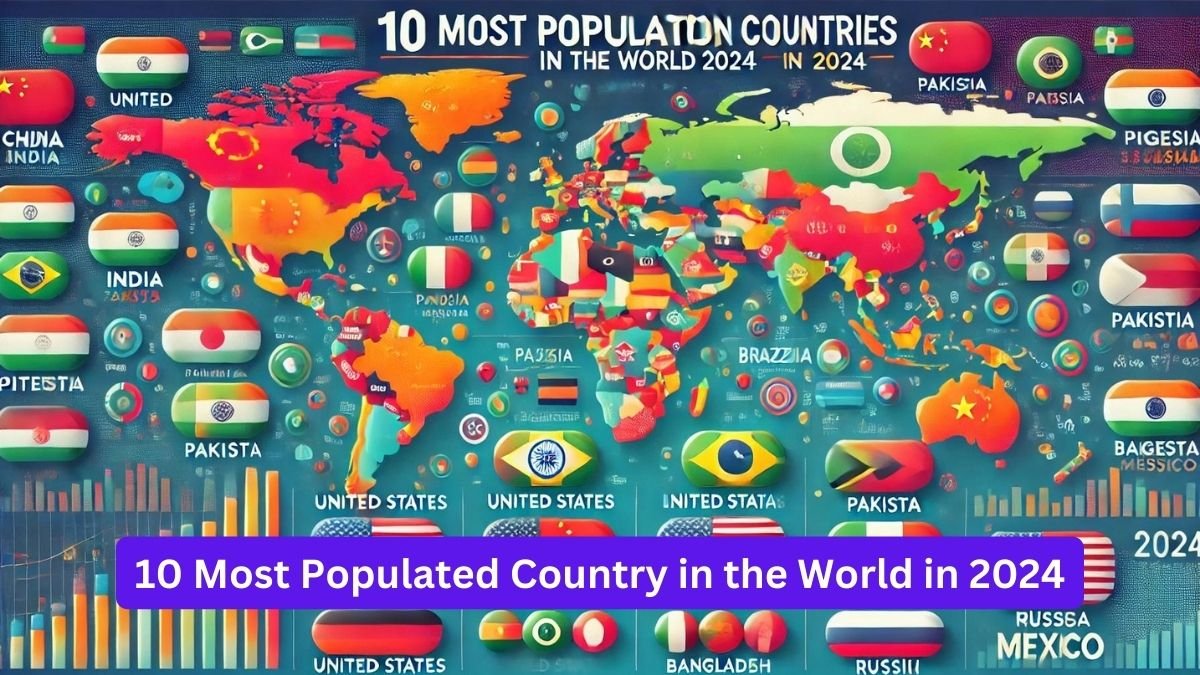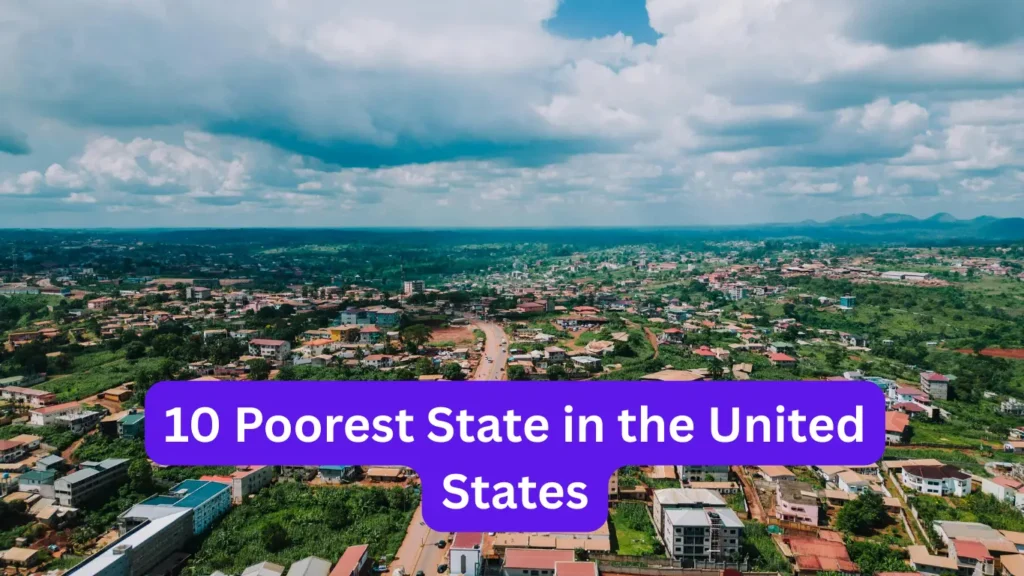India, the world’s most populous country in 2024, has an impressive population of 1.45 billion people, making up 17.78% of the global population. The world’s most populous nations are not just defined by their large numbers, but also by how they manage their demographic challenges and opportunities. From densely packed urban centers to vast rural expanses, these countries offer a diverse range of experiences and contribute significantly to global trends and issues.
In this overview, we will explore the ten most populated countries in 2024, examining their population figures, density, land area, and share of the global population. Understanding these factors helps us appreciate the complexities and scale of these nations, providing a lens through which we can analyze their roles on the world stage and their impact on global affairs.

Most Populated Country in the World
Here is a table that presents an overview of the 10 most populated countries in the world in 2024.
| Rank | Country | Population | Density (P/Km²) | Land Area (Km²) | World Share (%) |
|---|---|---|---|---|---|
| 1 | India | 1,450,935,791 | 488 | 2,973,190 | 17.78 |
| 2 | China | 1,419,321,278 | 151 | 9,388,211 | 17.39 |
| 3 | United States | 345,426,571 | 38 | 9,147,420 | 4.23 |
| 4 | Indonesia | 283,487,931 | 156 | 1,811,570 | 3.47 |
| 5 | Pakistan | 251,269,164 | 326 | 770,880 | 3.08 |
| 6 | Nigeria | 232,679,478 | 255 | 910,770 | 2.85 |
| 7 | Brazil | 211,998,573 | 25 | 8,358,140 | 2.60 |
| 8 | Bangladesh | 173,562,364 | 1,333 | 130,170 | 2.13 |
| 9 | Russia | 144,820,423 | 9 | 16,376,870 | 1.77 |
| 10 | Ethiopia | 132,059,767 | 132 | 1,000,000 | 1.62 |
10. Ethiopia (Population: 132,059,767)
Ethiopia, the tenth most populous country in 2024, has a population of 132 million, making up 1.62% of the world’s population. With a population density of 132 people per square kilometer, Ethiopia covers a land area of 1,000,000 square kilometers.
| Ethiopia | |
|---|---|
| Population | 132,059,767 |
| Density (P/Km²) | 132 |
| Land Area (Km²) | 1,000,000 |
| World Share (%) | 1.62 |
In the ranking of the most populated countries in the world, Ethiopia is the 10th most populated country.
As one of the fastest-growing countries in Africa, Ethiopia’s youthful population and rapid urbanization reflect its dynamic social and economic landscape. The country is known for its rich cultural heritage, including its historic sites, diverse ethnic groups, and unique languages. Despite facing challenges such as economic development and infrastructure, Ethiopia’s strategic location and growing economy make it a significant player in the Horn of Africa and the broader region.
9. Russia (Population: 144,820,423)
Russia, the ninth most populous country in 2024, has a population of 145 million, which accounts for 1.77% of the world’s population. With a remarkably low population density of 9 people per square kilometer, Russia spans an enormous land area of 16,376,870 square kilometers.
| Russia | |
|---|---|
| Population | 144,820,423 |
| Density (P/Km²) | 9 |
| Land Area (Km²) | 16,376,870 |
| World Share (%) | 1.77 |
In the ranking of the most populated countries in the world, Russia is the 9th most populated country.
The vast size of Russia, coupled with its low density, means that its population is spread out across a diverse range of environments, from bustling cities like Moscow and St. Petersburg to remote and sparsely populated regions in Siberia and the Far East. This extensive geography presents both opportunities and challenges, influencing Russia’s economic, political, and social landscape. Despite facing demographic and economic challenges, Russia remains a significant global player due to its vast natural resources and geopolitical presence.
8. Bangladesh (Population: 173,562,364)
Bangladesh, the eighth most populous country in 2024, has a population of 174 million, making up 2.13% of the global population. With an exceptionally high population density of 1,333 people per square kilometer, Bangladesh covers a land area of 130,170 square kilometers.
| Bangladesh | |
|---|---|
| Population | 173,562,364 |
| Density (P/Km²) | 1,333 |
| Land Area (Km²) | 130,170 |
| World Share (%) | 2.13 |
In the ranking of the most populated countries in the world, Bangladesh is the 8th most populated country.
Despite its small geographic size, Bangladesh is densely populated, reflecting the concentration of its people in both urban and rural areas. The country’s rapid population growth and urbanization are significant factors in its social and economic dynamics. Bangladesh is known for its vibrant culture, textile industry, and recent strides in economic development, which contribute to its growing influence in South Asia and beyond.
7. Brazil (Population: 211,998,573)
Brazil, the seventh most populous country in 2024, has a population of 212 million, representing 2.60% of the world’s population. With a low population density of 25 people per square kilometer, Brazil spans a vast land area of 8,358,140 square kilometers.
| Brazil | |
|---|---|
| Population | 211,998,573 |
| Density (P/Km²) | 25 |
| Land Area (Km²) | 8,358,140 |
| World Share (%) | 2.60 |
As the largest country in South America, Brazil is known for its diverse ecosystems, including the Amazon Rainforest, and vibrant urban centers such as São Paulo and Rio de Janeiro. Despite its low population density, most Brazilians live in highly urbanized areas. Brazil’s economy is driven by agriculture, mining, and a growing tech sector, making it an influential player in both regional and global markets. Its rich cultural heritage, natural beauty, and emerging industries continue to shape Brazil’s future.
6. Nigeria (Population: 232,679,478)
Nigeria, the sixth most populous country in 2024, boasts a population of 232 million, making up 2.85% of the global population. With a population density of 255 people per square kilometer, Nigeria covers a land area of 910,770 square kilometers.
| Nigeria | |
|---|---|
| Population | 232,679,478 |
| Density (P/Km²) | 255 |
| Land Area (Km²) | 910,770 |
| World Share (%) | 2.85 |
As Africa’s most populous nation, Nigeria is a major economic and cultural powerhouse on the continent. Known for its youthful population, with over half of its citizens under the age of 18, Nigeria is experiencing rapid urbanization and economic growth. Despite challenges related to infrastructure and governance, Nigeria’s vibrant cultural scene, natural resources, and expanding tech industry make it a key player in Africa and on the global stage.
5. Pakistan (Population: 251,269,164)
Pakistan, the fifth most populous country in 2024, has a population of 251 million, representing 3.08% of the world’s population. With a high population density of 326 people per square kilometer, Pakistan spans a land area of 770,880 square kilometers.
| Pakistan | |
|---|---|
| Population | 251,269,164 |
| Density (P/Km²) | 326 |
| Land Area (Km²) | 770,880 |
| World Share (%) | 3.08 |
As a country with a rapidly growing population, Pakistan faces both challenges and opportunities. Its youthful population contributes to the country’s dynamic social and economic environment, while its rich history and cultural diversity are central to its national identity. Despite infrastructural and developmental hurdles, Pakistan’s strategic location in South Asia and its evolving economy position it as a key player in regional affairs.
4. Indonesia (Population: 283,487,931)
Indonesia, the fourth most populous country in 2024, has a population of 283 million, accounting for 3.47% of the world’s population. With a population density of 156 people per square kilometer, Indonesia covers a land area of 1,811,570 square kilometers.
| Indonesia | |
|---|---|
| Population | 283,487,931 |
| Density (P/Km²) | 156 |
| Land Area (Km²) | 1,811,570 |
| World Share (%) | 3.47 |
As the largest archipelago in the world, Indonesia’s population is spread across thousands of islands, with a significant portion concentrated in urban centers like Jakarta. The country’s cultural diversity, tropical landscapes, and growing economy make it a unique player in Southeast Asia. Despite its challenges with infrastructure and population distribution, Indonesia continues to expand its influence regionally and globally.
3. United States (Population: 345,426,571)
The United States, the third most populous country in 2024, has a population of 345 million, representing 4.23% of the world’s population. With a population density of 38 people per square kilometer, the U.S. spans a vast land area of 9,147,420 square kilometers.
| United States | |
|---|---|
| Population | 345,426,571 |
| Density (P/Km²) | 38 |
| Land Area (Km²) | 9,147,420 |
| World Share (%) | 4.23 |
Known for its diverse geography and large urban centers, the U.S. has a relatively low population density compared to many other large nations, with wide-open spaces in rural areas balanced by bustling metropolitan regions. As a global leader in politics, economics, and culture, the U.S. continues to play a central role on the world stage, attracting migrants from across the globe and influencing international affairs.
2. China (Population: 1,419,321,278)
China, the second most populous country in 2024, has a population of 1.42 billion, accounting for 17.39% of the global population. With a population density of 151 people per square kilometer, China covers a vast land area of 9,388,211 square kilometers.
| China | |
|---|---|
| Population | 1,419,321,278 |
| Density (P/Km²) | 151 |
| Land Area (Km²) | 9,388,211 |
| World Share (%) | 17.39 |
As a major global power, China’s significant population is spread across a vast and diverse landscape, which includes urban areas, rural regions, and challenging terrains. The country’s historical significance, rapid economic development, and strategic geopolitical position make it a crucial player in global affairs. China’s large population continues to impact its domestic policies and international relationships.
1. India (Population: 1,450,935,791)
India, the world’s most populous country in 2024, has an impressive population of 1.45 billion people, making up 17.78% of the global population. This densely populated nation sees 488 people per square kilometer, spread across a land area of 2,973,190 square kilometers.
| India | |
|---|---|
| Population | 1,450,935,791 |
| Density (P/Km²) | 488 |
| Land Area (Km²) | 2,973,190 |
| World Share (%) | 17.78 |
As the most populous country globally, India’s high population density reflects the concentration of people in both urban centers and rural regions. This immense demographic diversity contributes to the nation’s vibrant cultural and social landscape. India’s growing economy, rich history, and significant role in international affairs underscore its global importance.
Thank you for reading! If you’re interested in more related topics, click here.
I would also appreciate your support by visiting my second website, Calculationclub.com, which focuses on calculators.



Excellent site. A lot of useful information here.
I am sending it to a few pals ans also sharing in delicious.
And of course, thanks on your effort!